Volvo Trucks launch goes online amid coronavirus concerns
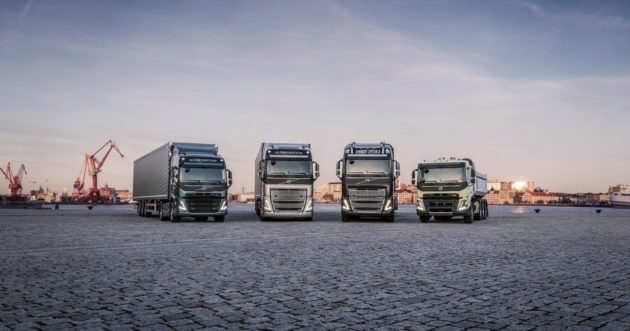
GOTHENBURG, Sweden – Imagine you were hosting the biggest truck launch in company history, but nobody came.
That’s exactly the situation Volvo Trucks found itself in today, as the OEM updated four models for the European market. A global press event scheduled in Sweden was cancelled only days before flights were scheduled because of concerns about potential exposure to the coronavirus. Details were revealed during a webinar instead.

“At Volvo we always put safety and people as Number 1, and we will not make any exception,” said president Roger Alm, adding that the OEM continues to monitor the spread of the virus and any influence it will have on its supply chain.
But the truck launch and business of trucking continue.
A driver focus
Volvo is coming off a particularly strong 2019, in which it delivered 131,000 trucks globally. “That is also a record in terms of deliveries,” Alm said, noting that the four models – the longhaul FH and FH16, regional FM, and vocational FMX — represent 70% of global sales.
Drivers were identified as a clear focus for the product upgrades, with models incorporating improved communications and ergonomics, lower noise levels, and enhanced safety systems. The new FM and FMX cabs, for example, are about 2 dB quieter, which equates to a 20% drop in sound pressure. They’re up to a cubic meter larger as well.
Such enhancements are seen as particularly relevant against a backdrop of a driver shortage, which has hardly been limited to North America. In Germany, 40% of drivers will retire in 10 to 15 years, said Helene Mellquist, senior vice-president – Volvo Trucks Europe. Brazil is already short 100,000 drivers, and in India 10% of trucks are at a standstill because of a lack of people behind the wheel.
A survey in the U.K., Germany and France showed that 88% of respondents believe the shortage will also get worse, she said.
“I think these are mind-blowing figures.”
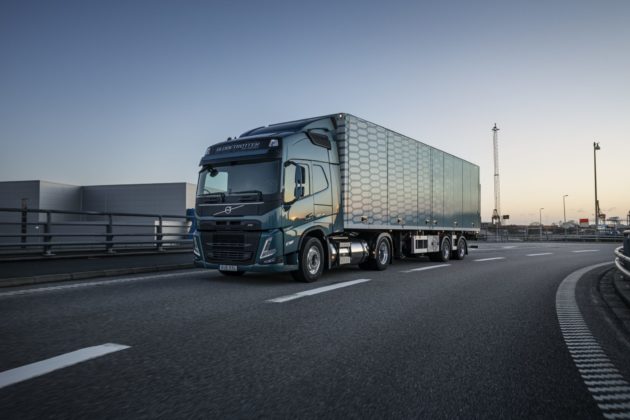
Commitment to combustion
While the truck lineup includes an array of advancements, Volvo officials made a point of stressing that they continue to run on combustion engines, even against a backdrop of expanding electrification. The OEM’s FL Electric coming to Europe will offer a 300-km range on a single charge, and battery-electric VNR regional tractors were just unveiled in California.
“We believe the combustion engine is an important technology going forward,” said Jessica Sandstrom, senior vice-president – global product management, referring to options such as biofuels and liquefied natural gas (LNG). The demand for LNG equipment – introduced two years ago as an option for the Volvo FH and FM trucks – would be even higher if the fuel was more available, she said.
Volvo expects electrification to happen gradually, first with city applications such as refuse and distribution, followed by regional and construction applications, and finally longhaul.
But climate-friendly changes continue to emerge in equipment with combustion engines as well. A Climate-Wise edition of the trucks will be 100% “climate neutral” when running on biofuels, said Maria Bergving, senior vice-president – brand and communication. Those running on LNG will reduce CO2 emissions by 20%.
The Volvo FH with I-Save for Euro 6 engines combines the new D13TC engine with other features that can boost fuel economy by up to 7% as well.
“The new range takes us into a sustainable future,” Sandstrom said.
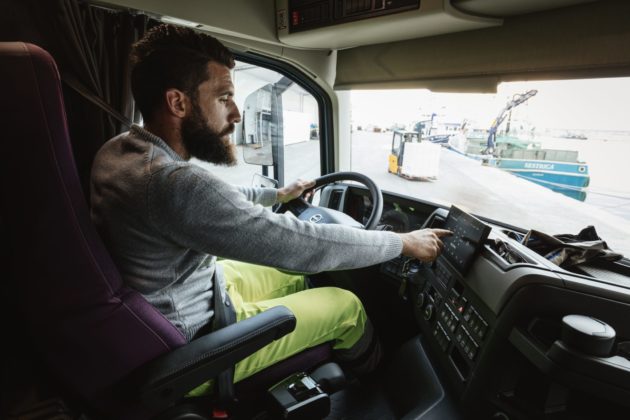
Telematics and monitoring
“We are able to connect our customers’ trucks to their business more than ever before,” added Hillevi Pihlblad Rafidashti, Volvo Group’s director – strategic planning. Real-time monitoring is now offered for critical components, leveraging artificial intelligence and machine learning. “We can predict potential issues much more accurately and frequently than we could before,” she said.
Oil drain intervals are also increasing as much as 50% in the process, expanding from 100,000 km over 12 months to up to 150,000 km over 18 months.
Inside the trucks, all the models feature a new 12-inch digital instrument display with four different screen views, while an optional nine-inch side display with touchscreen is used for everything from infotainment systems to camera monitors.
Monitors can also capture the image from a new wide-angle camera located just below the passenger-side mirror to offer a view of pedestrians. And it isn’t the only way visibility has been enhanced. Adaptive high-beam headlights in the FH and FH16, for example, will automatically adjust based on the approach of other vehicles.
Enhanced control
Control of the FMX, meanwhile, is enhanced with a new traction control panel that can engage differential locks with the turn of a knob – showing the status on the instrument display.
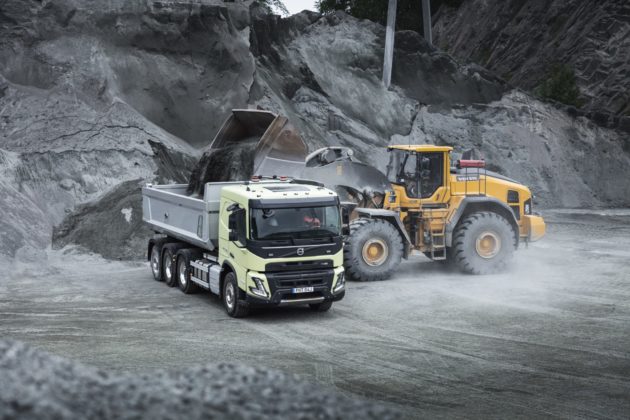
That construction truck also can also include a 38-tonne bogie that allows for a Gross Combination Weight of up to 150 tonnes. Updates to the front air suspension allows for front axles to be loaded up to 10 tonnes, or double front axles to be increased to 20 tonnes. Those with a steered tag or pusher axle have increased steering angles to help with maneuverability and tire wear, too.
On the highway, the FH 16 now features Descent Control, which sets maximum speeds to help prevent unwanted acceleration when traveling downhill, and adaptive cruise control that works down to a complete stop.
Electronically controlled brake systems, collision warning, emergency braking and electronic stability control are standard, while options include lane-keeping and stability assist, and a road sign recognition system that will display things like speed limits in the driver display.
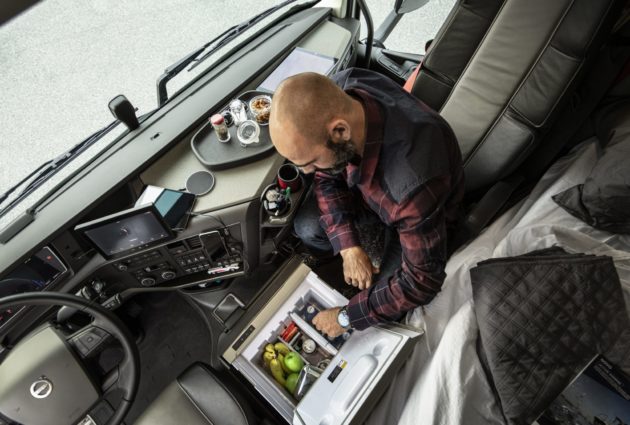
Have your say
This is a moderated forum. Comments will no longer be published unless they are accompanied by a first and last name and a verifiable email address. (Today's Trucking will not publish or share the email address.) Profane language and content deemed to be libelous, racist, or threatening in nature will not be published under any circumstances.
What after exhaust treatment is being used on the new Volvo?